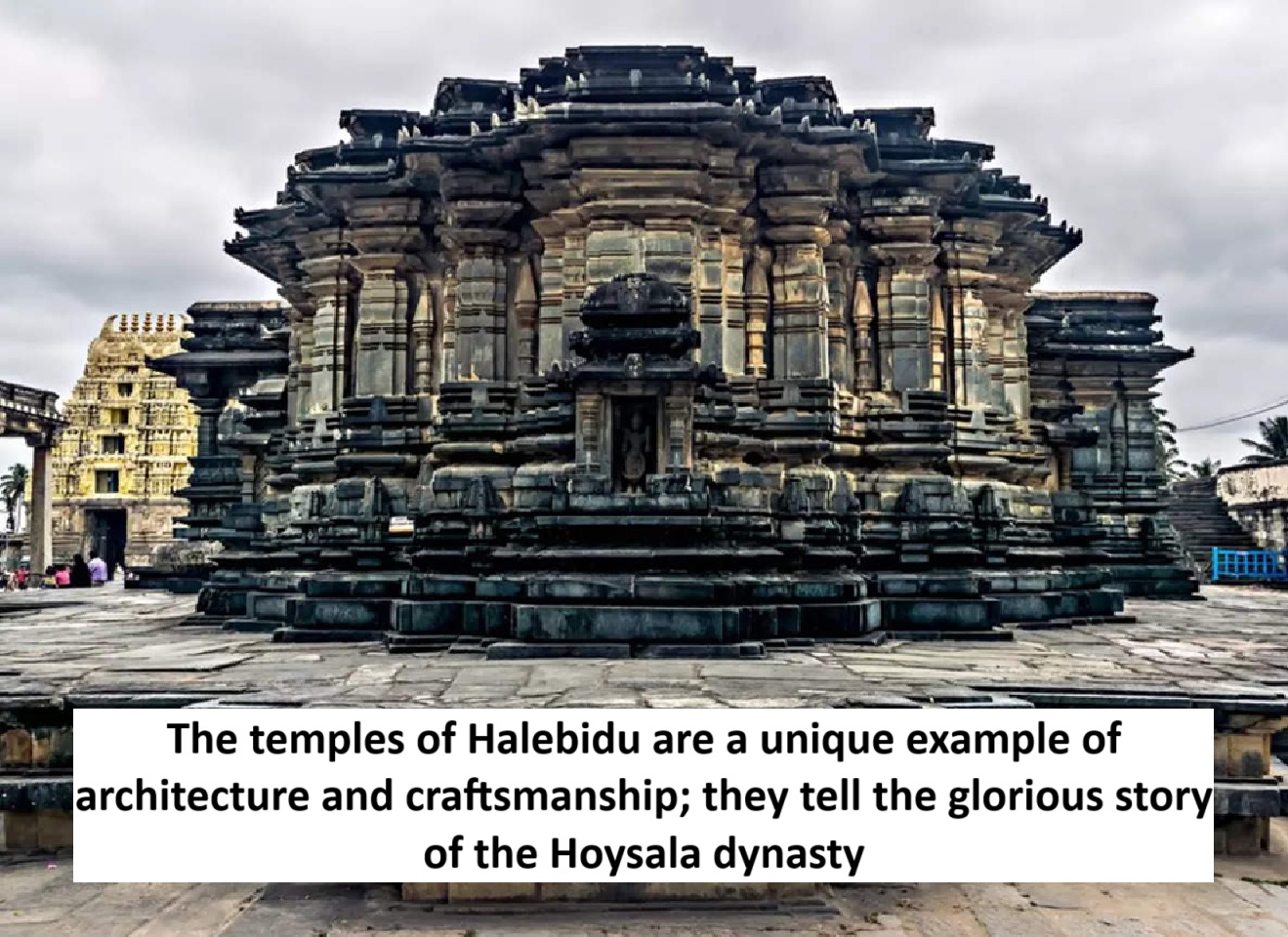
News Topical, Digital Desk : The history of Halebidu, a city in the Indian state of Karnataka (Halebidu Temple history) is thrilling. However, what thrills even more is its name. Halebidu means old or ruined city. It was once the former capital of the Hoysala Empire.
This place laid the foundation of the Vijayanagara Empire and protected South India from Muslim invaders from the north for about 250 years. Halebidu, about 150 km from Mysore, is a part of the remaining glory of the Hoysala dynasty history, the Hindu dynasty of South India.
The temples here are a wonderful example of architecture
This city (Halebidu travel guide) was at its full glory during the golden rule of the Hoysala kings in the 12th century. At that time it was named Dwara Samudra and during that time there used to be very grand and beautiful temples here. All the temples are built in Dravidian style and their craftsmanship is amazing. However, today very few of those temples are left.
But, the architecture of all the temples that are left is worth seeing. You will be surprised to see it. Statues of gods have been carved at various places in the huge temples. It is said that this place used to be the capital of Hoysala kings in the 12th century. Hoysalas were not kings by birth.
Halebidu was made the capital
But still they ruled from the 11th century to the 14th century. During this period they followed Jainism. King Vishnuvardhan was the most famous king of the Hoysala dynasty. He made his dynasty famous on the strength of his army.
He fought a war with the Chola Empire and shifted his capital from Belur to Halebidu. However, before this, he had made a place named Angadi, about 50 km from here, his capital, which is today a small unknown village in the forests of Karnataka.
This is how the foundation of the Hoysala dynasty was laid
In the show Ekant on OTT platform Discovery Plus, a priest of a temple in Angadi narrated the story of the foundation of the Hoysala dynasty. Dattatreya, the priest of Vasantika Devi temple, tells that the name of the first king of the Hoysala dynasty was Sala. He was going to the forest with his guru. During this time a lion came from the front.
Seeing him, his Guru gave a trident to Sala and said Hoye Sala… which means kill him in old Kannada language Sala. It is said that Sala killed that lion with a single blow. From that day onwards Sala and his descendants became kings and the foundation of this empire was laid.
Patronage given to arts and crafts
This story inspired the emblem of the Hoysala kings, which is seen in every building of the Hoysala empire. Any building built during the Hoysala rule has a statue of a man hunting a lion outside. Culture, art and crafts got a great boost during the rule of King Vishnuvardhana and Veera Ballala of the Hoysala Empire.
It is said that during his reign more than 1500 temples were built. However, today only 40 to 50 temples are left. After Angadi, Belur became the capital of the Hoysala Empire, which was also known as Belapuri at that time. At that time so many temples were built here that it was also called Varanasi of the South.
The most famous of these temples is the Channakeshvara temple in Belur, Karnataka. Jakanacharya had done the sculpture here. The architecture of the temple and the idols installed there are excellent to look at. In his honour, even today the Karnataka government gives an award to the sculptors in the name of Jakanacharya. Devotees travel miles to reach here.
It got ruined like this
The destruction of Dwarasamudra started during the reign of Veera Balala III. At that time, the Sultan of Delhi Alauddin Khilji sent Malik Kafur to attack South India. He damaged many buildings of Halebidu. He looted 241 tons of gold, 20 thousand horses and 612 elephants from South India and took them to Delhi.
When Malik Kafur attacked Halebidu, Veer Balala was fighting a war somewhere else. To avoid the destruction of Halebidu, he agreed to pay the tribute. However, he knew that the ruler of Delhi wanted to capture South India.
Therefore, he started strengthening his army with his two generals Hakka and Bukka. During this time the rule of Khiljis ended in Delhi and Malik Kafur was also killed. After that the rule of Tughlaq dynasty started. Muhammad bin Tughlaq also sent his army on the campaign of South India.
His army defeated many kings and reached Madurai. There, Veera Balala III's army surrounded him. Tughlaq's commander lured him into a compromise and said that he would go back to Delhi.
However, he later went back on his word and treacherously murdered Veera Ballala III. Thus, the last Hoysala king died and the Hoysala empire disintegrated.
--Advertisement--

 Share
Share



